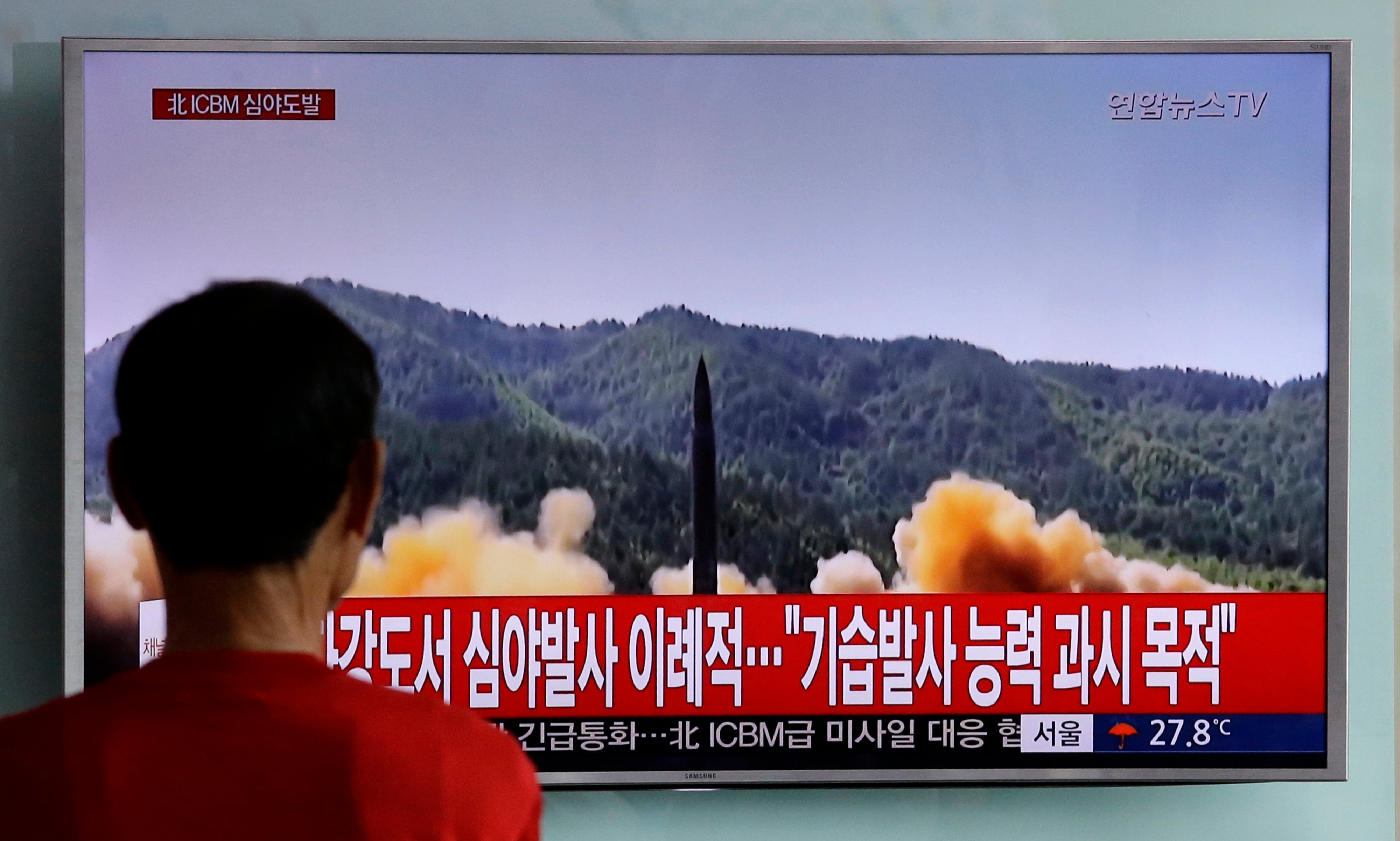North Korea’s latest threat to attack Guam was no doubt alarming for the roughly 16,400 U.S. troops and family members stationed on the west Pacific island.
But several Korean analysts said the harsh words are probably not indicative of a coming war but were instead just the latest salvo in the Kim Jong Un regime’s attempt to show strength and get the rest of the world to back off.
North Korea has issued such threats before, said Dr. Terence Roehrig, a national security professor at the Naval War College.
“It’s not surprising they’re going to be vocal about plans like that,” he said. “We do deterrence like that too.”
Pyongyang has several missiles, including the non-nuclear Musudans, that could reach Guam, just more than 2,000 miles away.
But the United States has the Terminal High Altitude Area Defense, or THAAD, missile defense system deployed to Guam, while AEGIS-equipped destroyers are nearby in Japan.
It also remains to be seen just how capable North Korea’s longer-range missiles are, Roehrig said.
“Range is one issue, but accuracy is another,” he said. “It’s not entirely certain to me that their accuracy is as good as you might think, or the North Koreans hope.”
The North Korean regime knows an attack on Guam would prompt a U.S. military response that would end Kim Jong Un’s regime, said Dr. Patrick Cronin, senior director of the Asia-Pacific Security program at the Center for a New American Security.
Still, academic talk about a new Cold War-style chess match between the two nations serves as little comfort to those that are in possible crosshairs.
President Trump dived headfirst into the war of words Wednesday when he said he would rain down “fire and fury like the world has never seen” on North Korea.
“North Korea had best not make any more threats to the United States,” Trump said from his golf course in Bedminster, New Jersey.
Guam Gov. Eddie Calvo said Wednesday that “this is not the time to panic,” according to a Pacific Daily News report.
“There have been many statements out there that have been made by a very bellicose leader, but at this point there’s been no change in the security situation here in Guam,” he said.
Secretary of State Rex Tillerson sought to walk back the alarm Thursday, saying “Americans should sleep well at night” and that the situation has remained unchanged.
But a few hours later, Defense Secretary Jim Mattis took his boss’ tack and warned that North Korea’s pursuit of nukes “would lead to the end of its regime and the destruction of its people.”
RELATED

Despite the harsh words, neither side wants war, according to analysts, and tough talk is part of deterrence, to ensure the other side doesn’t take things kinetic first.
“North Korea’s capabilities are meant as threats, not as instruments they could use,” Cronin said. “Their survival is immediately called into question if they ever fired one of these.”
Still, fiery words from North Korea are amplified by missile tests that suggest an increased and troubling capability.
Just this week, the Washington Post reported that U.S. intelligence officials believe the North Koreans can now miniaturize nuclear warheads to fit on missiles as the regime develops an arsenal of intercontinental ballistic missiles that could strike mainland America.
But experts said many questions remain about the North Korean capability.
“I think it’s still unproven that North Korea would be able to launch with sufficient accuracy to hit a target like Guam with a high probability of success,” said Scott Snyder, a senior fellow for Korea studies and director of the U.S.-Korea policy program at the Council on Foreign Relations.
But he added that the agency is working to mitigate evolving, complex threats that could include several ICBMs or decoys.
In North Korea’s statement announcing it was reviewing plans to attack Guam, Pyongyang’s state-run KCNA news agency said show-of-force flights by U.S. B-1 bombers taking off from Guam’s Anderson Air Force Base and flying near North Korean airspace “gets on the nerves” of the country.
Two of the bombers flew the route earlier this month.
The U.S. Air Force has undertaken similar runs under Presidents Obama and Trump after North Korean nuclear and missile tests to show that the current state of things remains unchanged, Cronin said.
“Remember who has the more capable military — remember we have your address and can put bombs on target instantly,” he said.
The U.S. can deter North Korea from outright hostility with the threat of utter destruction if Pyongyang attacked, Cronin said.
“We are in an intensified Cold War situation in North Korea, but we deter North Korea from being able to actually use these weapons,” he said. “The brinksmanship that is manifested in these hysterical words are only intended to scare and frighten.”
While a North Korean attack on Guam remains irrational and unlikely, the United States remains a slip-up away from war with North Korea, Roehrig said.
“I am more worried when we get in crises, that is when leaders make mistakes and work on short timelines and lack of intelligence,” he said. “Then bad things can happen.”
Geoff is the managing editor of Military Times, but he still loves writing stories. He covered Iraq and Afghanistan extensively and was a reporter at the Chicago Tribune. He welcomes any and all kinds of tips at geoffz@militarytimes.com.




